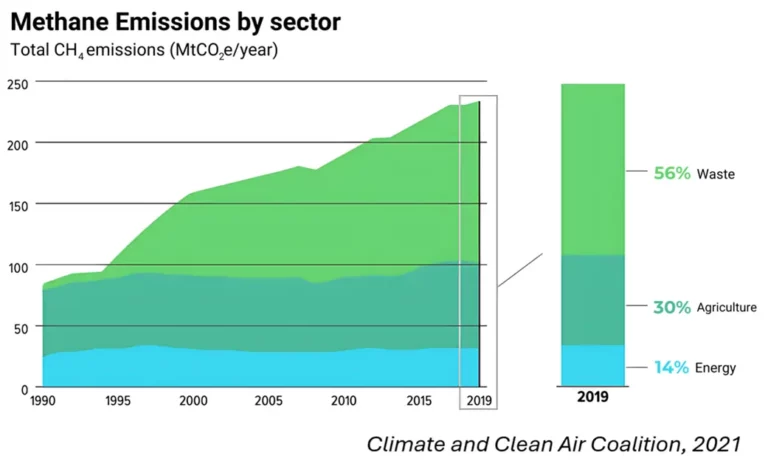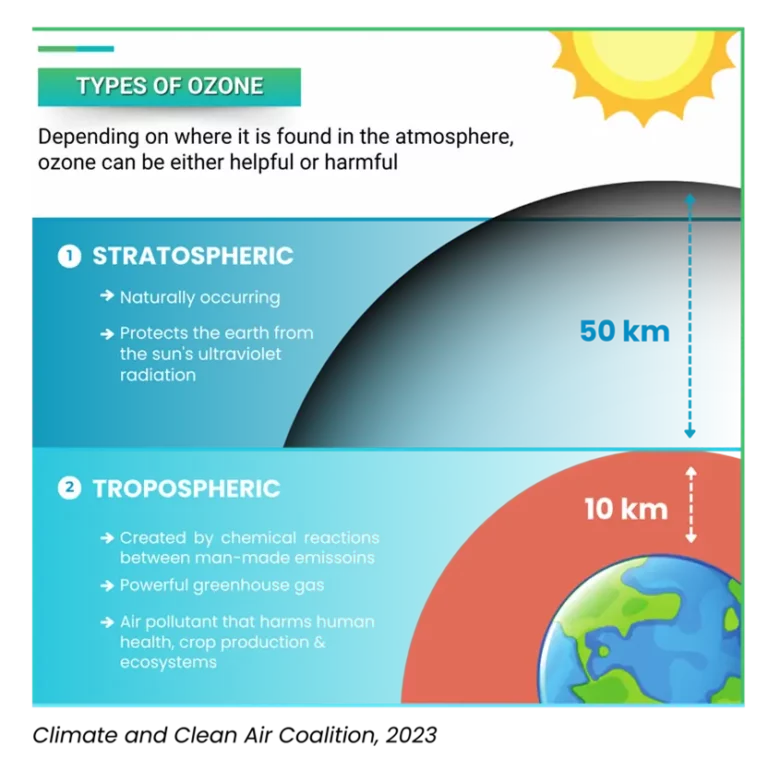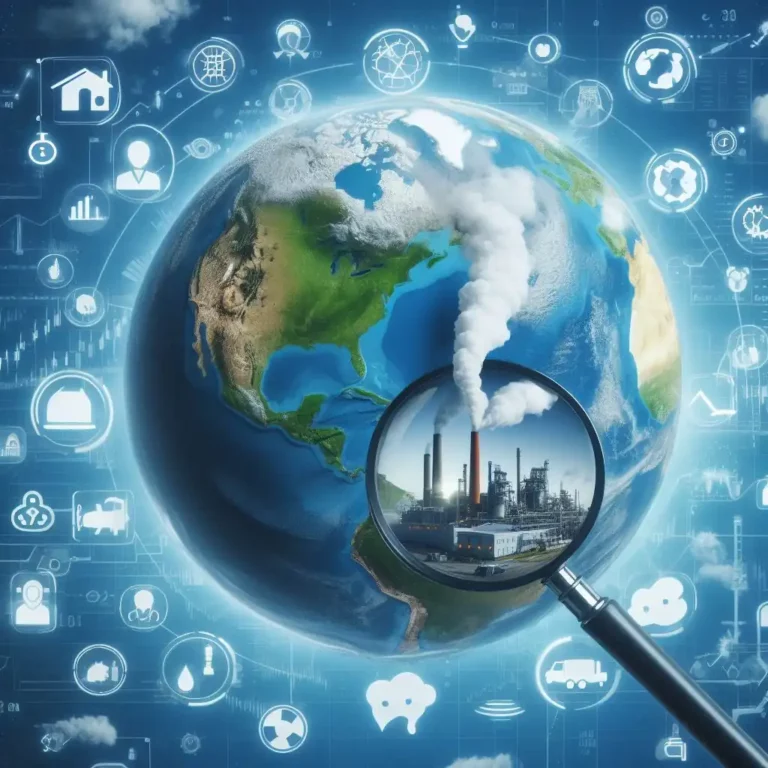What is Methane?
Methane (CH4), classified as an anthropogenic non-CO2 greenhouse gas (GHG) emission, has a much shorter atmospheric lifetime than CO2 but is a much more potent greenhouse gas. It is a Short Lived Climate Pollutant (SLCP), has an atmospheric lifetime of around 12 years. Methane is about 80 times more powerful than CO2 as a GHG in a 20 year period and caused more than 30% of current global warming so far[1].
Methane is naturally produced through processes like microbial activity in wetlands, termites’ digestion, and geological processes. However, human activities from biogenic sources and energy sector, significantly contribute to the increase in methane emissions.
Over 90% of global anthropogenic methane emissions originate from three main sectors: agriculture, fossil fuels, and waste. Fossil fuel activities are responsible for not only more than half of carbon dioxide emissions but also over one-third of global anthropogenic methane emissions. In 2022, the global energy sector alone accounted for nearly 135 million tons of methane emissions, slightly higher than the amount in 2021[2].
At COP28 Global Methane Pledge (GMP), Ministers welcomed transformational national actions and catalytic grant funding to deliver on the goal to cut methane at least 30 percent by 2030. This year, GMP partners announced over US$1 billion in new grant funding for methane action mobilized since COP27, more than triple current levels, which will mobilize billions in investment to reduce methane[3].

Highlighting its regional importance, the energy sector in Indonesia contributed 14% to national methane emissions in 2019[4]. This emphasizes the necessity for targeted efforts to mitigate methane emissions, especially considering the significant role of the energy sector in this environmental challenge.
The Impact of Methane on Climate Change
Methane plays a pivotal role in global warming by contributing to the greenhouse effect, where it traps heat in the atmosphere, resulting in an elevation of global temperatures (UNEP, 2022).
Methane is estimated to have a Global Warm Potential (GWP) of 27-30 over 100 years, with carbon dioxide (CO2) serving as the reference with a GWP of 1. Methane emitted today lasts about a decade on average, which is much less time than CO2. But methane also absorbs much more energy than CO2. The net effect of the shorter lifetime and higher energy absorption is reflected in the GWP. Methane’s GWP also accounts for some indirect effects, such as the fact that methane is a precursor to ozone, and ozone is itself a GHG[5].

Methane and Human Health
Reducing methane emissions is a highly efficient strategy to stable the climate and improve public health. Methane significantly worsens the impacts of climate change, and it also indirectly influences human health, crop productivity, and vegetation well-being by serving as a precursor to the generation of tropospheric ozone or ground-level ozone[6]. Increasing levels of ground level ozone, also known as smog, exacerbating asthma and respiratory diseases.
Methane Mitigation Strategies
Methane mitigation strategies aim to reduce the release of methane into the atmosphere, mitigating its impact on climate change.
Here are several effective strategies:
- Leak Detection and Repair (LDAR) in oil and gas operations. Methane emissions often occur during the extraction, processing, and transportation of fossil fuels. LDAR programs involve the use of cutting-edge technologies, such as infrared cameras and sensors, to detect and identify methane leaks in equipment and infrastructure.
- Renewable Energy Transition: Shifting from fossil fuels to renewable energy sources reduces the overall demand for methane-producing fuels, contributing to a decrease in methane emissions.
- Methane Capture Technology of Coal Mines; High concentration sources of methane can be captured through degasification systems[2].
Author:
Azka Ghaida
Energy Academy Indonesia (ECADIN)
Citations:
[1] The Global Climate & Health Alliance. (2023). Methane & Health.
[2] International Energy Agency. (2023). Methane Abatement.
[3] European Commission. (2023). Global Methane Pledge.
[4] Climate and Clean Air Coalition. (2021). Global Methane Pledge.
[5] U.S. Environmental Protection Agency. (2023). Greenhouse Gas Emissions.
[6] Climate and Clean Air Coalition. (2023). Tropospheric Ozone.






